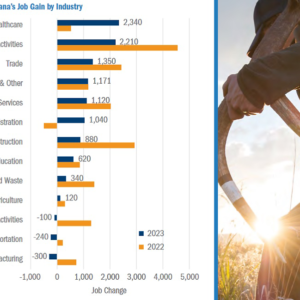By Evelyn Pyburn
So, how dare a political candidate even mention the concept of privatization!
When people started asking me about Republican candidate Tim Sheehy’s comments about privatizing health care, etc. as though it was an outrageous thing to say, my answer has been, “I only wish I thought he intended to do it.”
More than anything, though, I was most amazed at people’s response to it. Even that Senator Jon Tester should be so over the cliff as to think it would be a persuasive argument against his opponent! Not that it isn’t obvious that Tester is all for government controls, and fully in league with the socialists or Marxists, but I didn’t realize that the public in general would be so horrified about privatization that it could be used convincingly in a political debate in the United States of America. How truly sad and disappointing about the state of things in our country.
We were never meant to be a county in which government ran or controlled the economy. The government was supposed to be as separate from the economy as it is from religion. The reason should be readily apparent in the current state of affairs. Most of the issues that trouble us today, including the very existence of “the swamp,” are manifestations of government controlling economic activity.
The real reason politicians and government leaders hate and fear Donald Trump is because he poses a threat to a system that has made a great many of them very rich in the selling of favors, pilfering, bribing, embezzling and other means of appropriating the unearned. President Biden and his son are not alone. They were simply more brazen than most.
But it is still hard to believe and disheartening that so many average Americans do not have greater appreciation for the amazing success and grand achievements that they have all been part of, as participants of the private sector. They are the private sector! They are the ones that Sen. Tester is disparaging.
The US is the strong, successful and desirable place to live that it is because of the private sector – not because of government. In fact, given the staggering mountain of regulations and tyrannical threats from government, that the private sector – the producers in our country – must deal with, it is most accurate to say that it’s in spite of the government that the private sector continues to produce.
One must understand that the government has nothing – absolutely nothing — that it didn’t first confiscate from its citizens. Government creates absolutely nothing and advances our standard of living not at all. Everything that politicians are always eager to take credit for is not their doing one iota. They must always first take from the private sector which often means the disruption and destruction of the efforts of the private sector.
That is why all the other “isms” fail so quickly. To be in charge, the authoritarian regimes must destroy the very means – the creativity, ingenuity, and productivity – – of its citizens that it otherwise depends upon. If citizens are allowed to retain the personal, individual power they must have in order to produce, then there is nothing for the power mongers to appropriate and upon which to build any kind of pretense of supremacy.
I am sure that much of the reason that appreciation of the private sector has diminished so significantly is that we have been generations removed from a real free market, and those generations have no knowledge of it. They have certainly been taught nothing about it in government schools, and so intertwined is government in our daily lives, many people can’t imagine how we would manage without it.
And, sadly, it is undoubtedly true, as so many others aspects of American life is demonstrating, there is an ever greater lack of the moral integrity which spawns the free market AND which the free market spawns.
Much of the support of government programs came from and continues to be advanced by people seeking the unearned. The woman pleading for government health care in the Tester ads says as much. She wants free health care – knowing full well that it is not free — knowing that the unearned wealth for which she grabs must first be extracted from other citizens – from her neighbors.
People have responded saying “but without the government no one can afford health care.” But that is exactly what government intervention spawns. The only reason most people can’t afford health care is because the government has made it unaffordable. If you want to make any commodity unaffordable, just get the government involved. In my life time, there was a time, in which people could afford their own health care – and insurance was something of a novelty.
The recent experience with the COVID epidemic revealed, most excruciating, exactly how much government runs our medical system and what has come of it when hospitals and medical professionals bow more deeply to government than to their patients. Because of that there has been an increasing exodus, by medical professionals from government dominated institutions, who are going back to the private sector; and one of the first things they are reporting is how greatly they can reduce their prices.
Can you imagine how incredibly affordable health care might be if the people in the business ran their business without government intrusions, regulations, mandates, edicts, price controls, etc. Health care would be eminently affordable for most people. And, remember, before government programs, hospitals were often built, managed and supported, specifically to serve the poor, by philanthropic institutions – they too are part of the private sector.
A return to private markets in medical care would mean more options, better care and, yes, lower costs.
So if Tim Sheehy is a believer in the private sector more power to him. So am I. And, tsk, tsk, tsk that Sen. Jon Tester is not.





